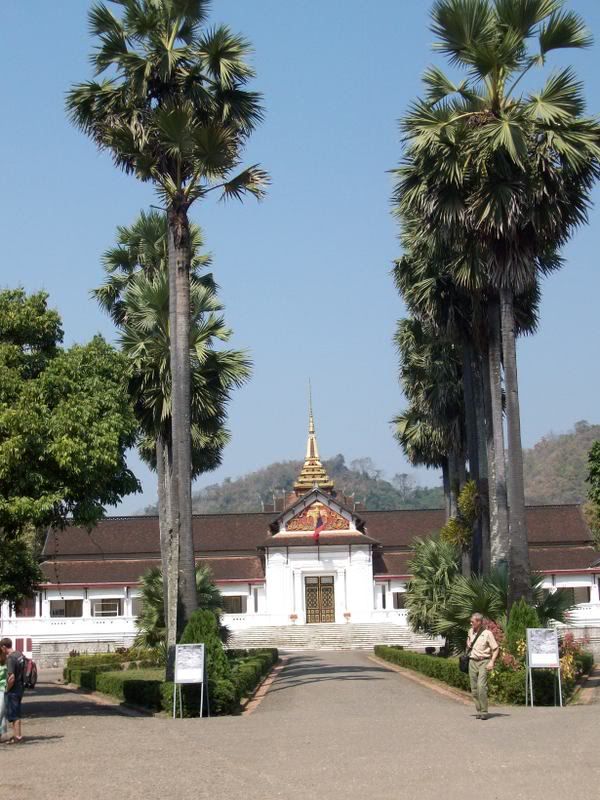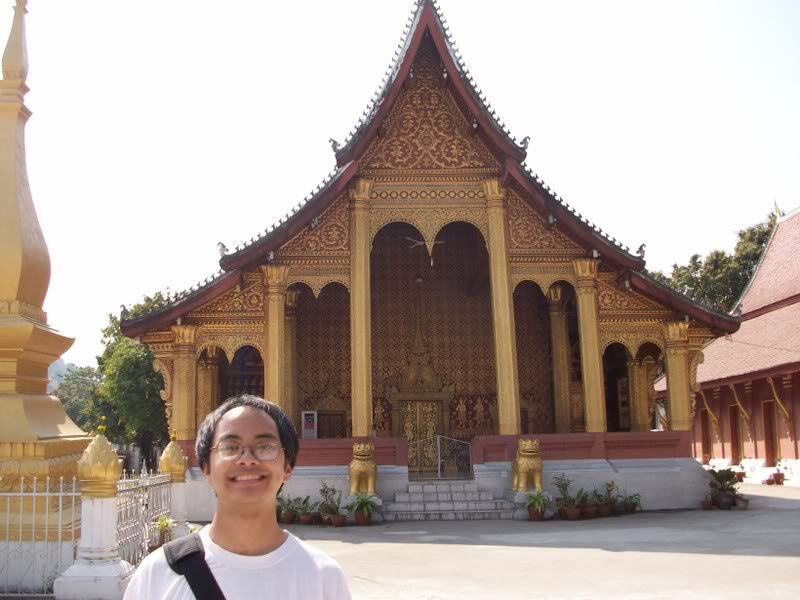
Royal Palace Museum
A wide thoroughfare like the Champs Elysee? Check. Sidewalk cafes? Check. French mansions and architecture? Check. It's official: Luang Prabang is the Paris of Southeast Asia.
With its abundance of exquisite Buddhist temples and well-preserved French houses, Luang Prabang felt more like a capital city than Vientiane. The constant flow of travelers also created a real buzz to the place that Vientiane lacked. It's much more of a hot destination than the capital.
It also resembles Paris in a less pleasant way. Luang Prabang may have gotten too popular for its own good, as an Australian backpacker commented to me. Finding a guesthouse that costs less than 100,000 kip a night (US$11.78) was a miracle.
You know you've been traveling in Southeast Asia for too long when anything over US$15 a night for a private room seems too expensive. There are so many tourists in Laos that finding budget accommodation can be difficult. You can't really negotiate, because the manager knows that if you turn down his room, there will be another foreigner who will take it.
Most guesthouses in Laos also don't accept reservations, maybe it's just too much work for the clerks. So I was stuck with tramping around from one place to the next, inspecting rooms and inquring about rates. Clean beds tend to be common, but bathrooms vary wildly in quality.
The best advice for finding a place to stay is to time your arrival at around 10:00 a.m. to 12:00 noon. By the afternoon, all the cheap rooms have been taken and you'll see "Full" signs on every guesthouse entrance.
Eiko, a Japanese traveler, agreed and said that bargain-hunting in Laos was difficult. She said when she usually shops around in other countries, she encounters a wide range of prices. But in Laos, every vendor seemed to charge the same prices. Her theory was that Laotian people don't like to compete. That's plausible, since they're so laidback.
Or maybe prices are set by the government, as Laos is run by a Communist party. Another reason is that Laos doesn't have much of a manufacturing base, so most products are imported from foreign countries. Thailand is a big supplier of goods. With the foreign tariffs, the prices for everything are higher.
Luang Prabang is one of the few cities in the region built for walking. Big cities in Asia tend to be minefields for pedestrians. Potholes, tuk-tuks, taxis, motorbikes, and crowds of locals can turn the shortest walk into the toughest obstacle course. But the city's main drag, Sisavangvong Road, is mostly for pedestrians only. The streets running along the Mekong and Nam Khan rivers are also eminently walkable.
There is also better nightlife to be had. Phousi Road is home to several outdoor bars with green, leafy environments. Ironically, the hottest nightspot is the 10-pin bowling alley. Most bars close at 12 a.m. for the curfew, but the bowling alley stays open until 2 a.m.
Laos has one of the highest retentions rates for foreign expats. Once they're assigned to Laos, they never want to leave. The boss calls and asks if you want to take an assignment in war-torn Africa? Forget it!
After seeing Luang Prabang, I can see why. It's the perfect place to live the bohemian fantasy: living in an exotic land, eating organic food, helping out in community projects and socializing with friendly locals. Everywhere you can buy ethnic handicrafts and go on "ecotourism" trips. Maybe I got it wrong. Luang Prabang could be the San Francisco of Southeast Asia.





2 comments:
đặt vé máy bay eva air
vé máy bay từ sài gòn đi mỹ
korean air ho chi minh
giá vé máy bay đi mỹ giá rẻ
đặt vé máy bay đi canada
Cuoc Doi La Nhung Chuyen Di
Ngẫu Hứng Du Lịch
Tri Thức Du Lịch
kuşadası
milas
çeşme
bağcılar
giresun
QİFVFO
Post a Comment